




 [Rundweg Stadtbefestigung]
[Rundweg Stadtbefestigung]
History of Dorsten - Station 43: Essener Tor Translator: Lyn
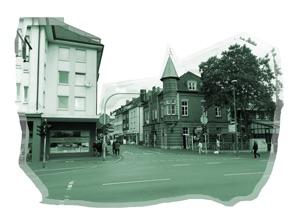
The new fountain was officially presented at "Essener Tor". Simultaneously, the 43rd History Station plaque of the town recalls the past of this important place.
During the "Cologne War" ("Kölnischer Krieg") in the 16th century Dorsten, which was Catholic, was threatened by storming Protestant troops. On the evening before the attack, the men of Dorsten felt sure of victory. They were so sure of their victory. that they celebrated the foreseeable victory by drinking plenty of alcohol. When the attack occurred, the men were sleeping off their hang-overs and the women of Dorsten successfully defended the town.
This and other stories of Dorsten's past were related by Hans Jochen Schräjahr from the Local History Society, "Verein für Orts- und Heimatkunde" by the presentation, on Saturday afternoon, of the 43rd History Station "Essener Tor". This event was celebrated together with the offical presentation of the fountain at "Essener Tor", which has been newly-designed in co-operation between businesses and citizens of Dorsten.
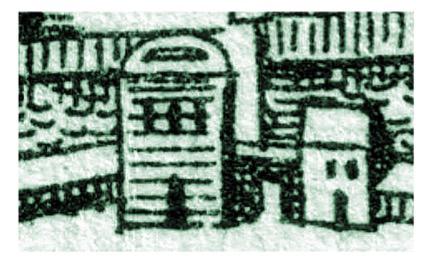 Essener Tor |
1251 |
_ |
With Dorsten being elevated and officially recognised as a town, the citizens of Dorsten have the duty to protect the territory of the archbishop of Cologne, who is the Lord of the town. From the 13th to 14th century they fortified their town with a wall. The connections to the neighbourhood are fortified by three town town gates: Essener Tor (S), Lippetor (N) and Recklinghäuser Tor (O). | |
|
|
1488 |
_ |
At the gate "Essener Pforte", the ground was highered, the bridge and the half-timbering of the town gate renovated and the gate tower and the battlement walk were given new slate roofing. | |
|
Margarete Burich, the widow of the Mayor of Dorsten, is tortured to death as a witch.
| _ |
1588 |
_ |
During the Cologne War (1584 - 1588) the women of Dorsten defended the Catholic town against the troops approaching from Kirchhellen belonging to Count von Oberstein ("Graf von Oberstein) who was on the side of the Archbishop of Cologne, Gebhard Truchseß von Waldburg, who had converted to Protestantism in 1582. |
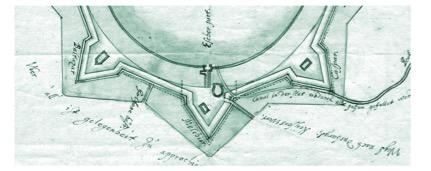 Bastion in front of the "Essener Tor" |
17. Jh. |
_ |
Following the occupation of Dorsten by Hessen (1633) newer ramparts are built outside of the bastions of the Middle Ages and extend the circular ground-plan of Dorsten into an eight-pointed star-shape. | |
|
During a transit of Venus, Georg Christoph silberschlag discovers the atmospher of Venus.
| _ |
1761 |
_ |
During the Seven Year War ("Siebenjähriger Krieg") (1756 - 1763), the Hannoverians shoot for six hours on the town, which was at that time occupied by the French, making it ripe for attack, so that they can force entry into the town via the Essener Tor. 30 houses and nine barns are burnt down close to the market place, in an area thereafter known as "Verbrannter Platz" ("Burnt Square"). |
|
|
1827 |
_ |
The three town gates "Statdttore", from the Middle Ages, are broken up for the practical transport reasons. | |
 View from the avenue "Kirchhellener Allee" towards the street "Essener Str." (around 1920) |
1865 |
_ |
The builder and gas engineer from Barmen, Christian Heyden, suggests for money-saving reasons, using 28 gas lamps to replace the 18 oil lamps used to light the centre of town. A gas company, managed by the town, is established In 1866/67 diagonally opposite "Essener Tor" and in 1900 it is moved to Feldmark (Lindenfeld) and closed in 1910. | |
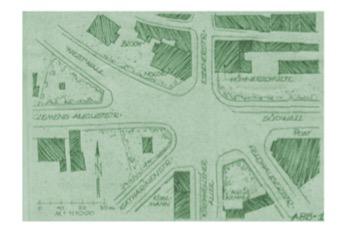 "Sieben-Straßen-Mündung" (A Junction of seven streets) |
1933 |
_ |
The junction of the seven streets (Essener Straße, Südwall, Feldhauser-Straße, Kirchhellener Allee, Katharinenstraße, Clemens-August-Straße, Westwall) "Sieben-Straßen-Mündung" at "Essener Tor" is a named "Adolf Hitler Platz". | |
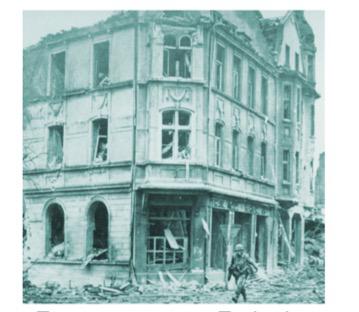 Destruction at the end of the Second World War (March/April 1945) |
nach 1949 |
_ |
The difficult transport route at the junction of seven streets ("Sieben-Straßen-Mündung" is replaced by a new road layout, which shapes the townscape in this area, nowadays. | |
|
|
1953 |
_ |
In order to improve the townscape, the town erects a green space with a small water-basin and a water-spouting trio of ducks, in front of the butcher's shop, Kohlmann | |
|
|
2018 |
_ |
The rifle club, "der allgemeine Bürger-Schützen-Verein Dorsten e.V" renovates the neglected fountain at the "Essener Tor". |
[zurück]
Daten und Fakten
Eröffnung - 27.October 2018
Adresse - The avenue, "Alleestraße" and street "Gahlener Str."
Geodaten - 51°39'31.4 6°57'51.0
Celebratory Presentation on 27th October 2018
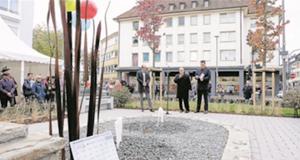
Hans Jochen Schräjahr relates stories from Dorsten's history.
The History Station at the new site illustrates important events at "Essener Tor" from 1251 to 2018. The meanwhile 43rd History of Station was created by the tried-and-tested co-operation of the Lions Club Dorsten-Hanse. the local history society ("Verein für Orts- und Heimatkunde Dorsten") and the town of Dorsten.

Tobias Stockhoff thanks everybody involved for the good initiatives of the societies.
Many citizens of Dorsten are happy about the new installation. The Mayor, Tobias Stockhoff, also praises the initiative of the rifle club "Altstadtschützen". The "Altstadtschützen" have made our town more attractive with this measure. A project, that it is recommended to copy. Mr Stockhoff pointed out the special things of the new design: It was not possible to dig too deep because there had been a gasworks at this place, in the past. The new fountain was financed from among others by a grant from the initiative for town improvement "Wir machen MITte".
Translator's Note: The town improvement initiative "Wir machen MITte" is a pun in German. "Mit" means with and "Mitte" is the centre. Hence the meaning is "We are doing something with (mit) the centre (Mitte) ".
History Station in Dorsten
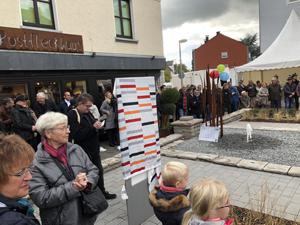
History Station Plaque still covered.
"Many other towns envy us for our History Stations", "„Viele andere Städte beneiden uns um unsere Geschichtsstationen" according to the Mayor. Once the plaques was unveiled, it was surriunded by many inquisitive citizens. "One learns a lot about the history of our town via the History Plaques in the meighbourhood." „Man erfährt mit den Geschichtstafeln vor Ort viel über die Vergangenheit unserer Stadt", says Maria Schmitz. "That's more fun than reading a history book". „Das macht mehr Spaß als ein Geschichtsbuch zu lesen."
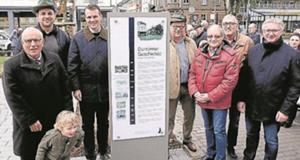
The first wooden history plaque
The celbratory offical openening of the History Station almost couldn't take place on the pre-arranged date. There was a delivery delay with the glass plate that had been ordered. This was not particularly obvious, thanks to an alternative plan B. The plaque was provisionally printed on wood, which was later exchanged with the glass History Station plaque.
Tranlsator's Note: The sourc of the original text from which this is translated is given as: (Bericht: Dorstener Zeitung von Klaus Pieper)

